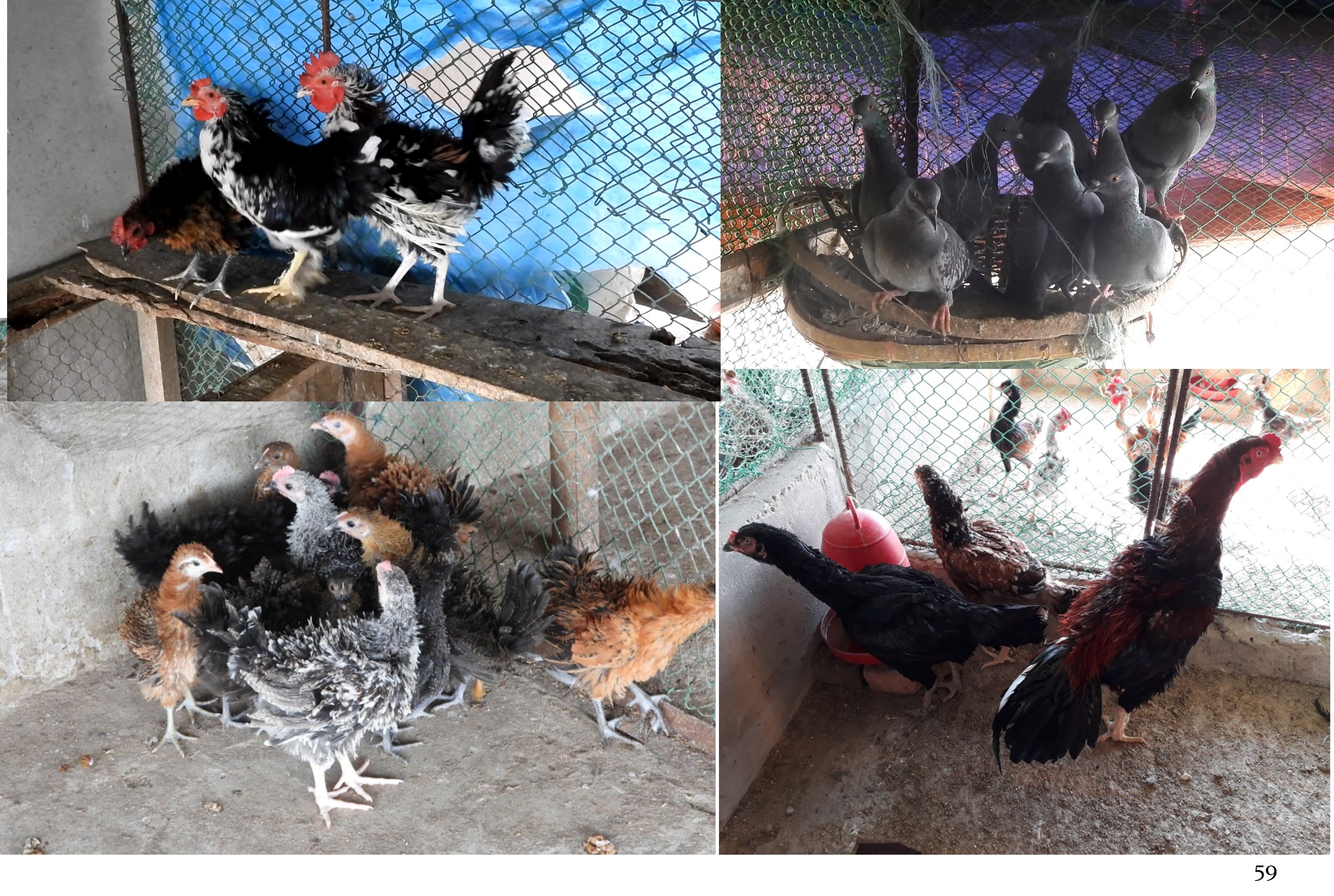Conservation and multiplication of native chicken and pigeon Germplasm at Sylhet Region
Sylhet
Indigenous chickens and pigeons are important in customary rites, such as gift payments, family poultry or back yard and other purposes. Although the productivity of indigenous chickens in terms growth and number of eggs per hen per year is low, its production is attained with minimal labor and rearing inputs. The low inputs and consequently, low risk is one of the major advantages of indigenous chicken production. The conservation of these valuable chicken genetic resources is necessary in the light of rapid loss of indigenous breeds through commercial dilution and breed replacement.
The study will include available chicken breeds/types and pigeons. The experiment will be conducted for conservation, development, multiplication as well as molecular selection of best individual of different native chicken and pigeon genotypes at Sylhet region. Observations will be recorded through setting a chicken and pigeon Germplasm and Aviary system. Flock size will be different on the basis of availability of different genetic resources. For characterization of different varieties of native chicken, morphological variants and molecular characteristics will be identified and documented.
Ganabadi et al., (2009) reported that indigenous chicken is always thought to be better in term of carcass composition than commercial broilers due to its low fat content. Local non-descript coloured chicken is a vital source of tasty meat and eggs and more acceptable to rural people. The indigenous chicken population is composed of a number of breeds/types such as non-descript Deshi, Aseel, Naked Neck and Hilly. Some dwarf chickens and Red Jungle Fowls can also be seen in the country. The non-descript Deshi chicken is more acceptable to rural people as an important source of meat and eggs due to lower nutritional demand and higher resistance to diseases and heat stress (Barua and Howlider, 1990). The local people always try to find the indigenous (desi) cockerel for its tenderness and special taste (Ahmed and Ali, 2007). Native chicken of Bangladesh are categorized as Non-descriptive Desi (ND), Naked Neck (NN), Hilly (H), Aseel (AS) and Jungle fowl (Bhuyan et al., 2009) in respect of the morphological variations, as well as production performances.
This conservation and multiplication activities will maintain and exploit our own natural poultry genetic resources for sustainable development. With proper selection, breeding and care, this would be a massive boon not only to them but the whole scientific community. Vitally, it will develop and teach techniques for accurate and long-term preservation of stocks. Breeding designs aiding diversity exploitation and preservation can also be taught.
According to the Bangladesh Poultry Industry Central Council (BPICC), Bangladesh has 216 parent stock corporations. One hundred certified farms produce 1.48 crore chickens every week, often known as DOC or Day-Old Chicken. Breeders for parent stock businesses, on the other hand, are provided by the country’s 18 grandparent enterprises. These firms frequently import Grand Parent from the USA, Netherlands, Australia, and New Zealand. Our product climate adaptive native poultry genetic resources are will be a huge opportunities for big chicks market in Bangladesh which is more suitable for Bangladeshi consumer preferred tasty meat.
Establishment of nucleus flock at campus and farmers houses and this leads to learning and demonstration center for the different Departments of the Faculty of Veterinary and Animal sciences about five hundred (500) undergraduate and post-graduate students. Integration with Go/NGO with institutional support this program can also lead to establish university Poultry Research Institute.

